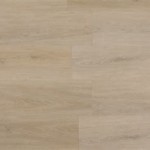Laying Laminate Flooring Over Concrete: A Comprehensive Guide
Laminate flooring has gained widespread popularity as a versatile and cost-effective alternative to traditional flooring materials. Its durability, ease of installation, and aesthetic appeal make it an excellent choice for a wide range of applications. However, installing laminate flooring over concrete requires specific considerations to ensure a successful and long-lasting installation.
Here are the essential aspects to keep in mind when laying laminate flooring over concrete:
1. Subfloor Preparation
Concrete subfloors must be flat, dry, and free of moisture. Check the concrete for any unevenness or irregularities that could affect the stability of the flooring. Level out any high spots using concrete leveler and fill in any low spots with a self-leveling underlayment. Ensure the subfloor has been cured for at least 28 days and has a moisture content of less than 12%.
2. Moisture Barrier
A moisture barrier is crucial to prevent moisture from seeping up through the concrete and damaging the laminate flooring. Install a polythene or polyethylene moisture barrier over the entire subfloor, overlapping the edges by at least 6 inches. Seal all seams with moisture-resistant tape.
3. Underlayment
An underlayment provides a cushion between the concrete and the laminate flooring, reducing noise and improving comfort underfoot. Choose an underlayment with appropriate thickness and vapor barrier properties. Roll out the underlayment over the moisture barrier, ensuring it is smooth and flat.
4. Installation
Laminate flooring is typically installed using a floating method, meaning it is not glued or nailed down to the subfloor. Start by laying the first row of planks parallel to the longest wall of the room, leaving a small gap (typically 1/4 inch) around the perimeter for expansion. Use spacers to maintain a consistent gap.
Interlock the planks by tapping or angling them together using a tapping block. Stagger the joints between the rows and ensure the end joints are offset by at least 6 inches. Continue laying the flooring until you reach the opposite wall, cutting the last planks to fit if necessary.
5. Trims and Accessories
Once the flooring is installed, install baseboards or moldings around the perimeter to cover the expansion gap and enhance the finished look. Use transition strips to connect the laminate flooring to other flooring types or doorways. Thresholds and ramps may be required to accommodate height differences.
6. Maintenance
Laminate flooring is relatively easy to maintain. Regularly sweep or vacuum to remove dust and dirt. Use a damp mop with a laminate flooring cleaner for occasional deep cleaning. Avoid using harsh chemicals or abrasive cleaners that could damage the surface.

Installing Laminate Flooring Over Concrete The Ultimate Guide Aa Floors

Laminate Flooring On Concrete Basement Floors Expert Installation Guide Csg Renovation

Installing Wood Flooring Over Concrete Diy

How To Install Vinyl Or Laminate Floors In A Basement Over Concrete Slab

How To Install Laminate Flooring Over Concrete

How To Install Laminate Over Concrete Day 1

How To Prepare A Concrete Floor For Vinyl Flooring Parrys

How To Lay Laminate Flooring On Concrete Howtospecialist Build Step By Diy Plans Laying Installing

Easy Ways To Install Vinyl Plank Flooring On Concrete

How To Install Laminate Flooring On Concrete Making Maanita
Related Posts








